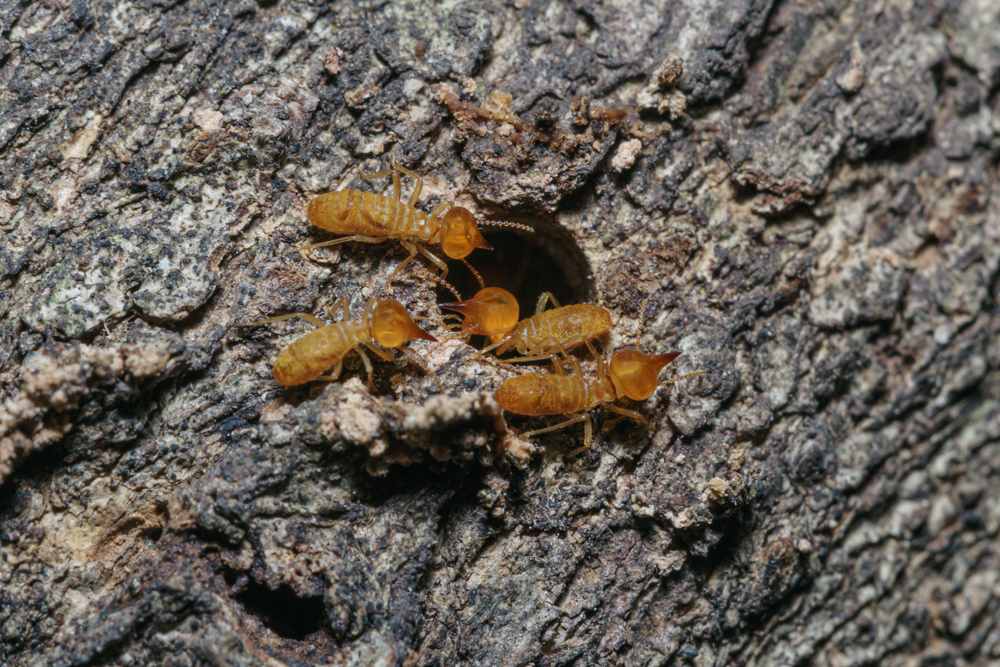Managing Tree Pests
by info

Homeownership requires taking an active approach to keeping trees and shrubs healthy, both to increase property values and add aesthetic qualities. A properly cared-for landscape enhances both property values and aesthetic qualities, adding value and providing aesthetic pleasures.
At times, seasonal invaders like stink bugs, boxelder bugs and silverfish enter homes to feed on food sources or find refuge from extreme heat or cold conditions. Tree care experts at Kansas City Tree Services mentioned that early intervention is essential in order to thwart such invasions from getting worse.
Chewing Insects
Chewing insects have strong mandibles to pierce and chew solid foods, while those with piercing-sucking mouthparts use delicate stylets that pierce plant tissues to extract nourishing fluids for sustenance.
Damage occurs from either the removal of these fluids, or from their exposure through insect saliva to the plant, leading to symptoms like spotting, curling, wilting and ultimately tissue death.
grasshoppers, caterpillars and cutworms are examples of sucking-chewing insects that feed on leaf edges, leading to damaged foliage. Eastern lubber grasshoppers feed along the edges of lilac and dogwood leaves while tuliptree and oak leaf miner caterpillars tunnel into leaves to consume their inner bark.
Another invasive pest to watch out for is the Emerald Ash Borer, which first made its debut from Japan and decimated ash trees east of Missouri when it arrived. If you suspect an infestation by this invasive insect, watch for sooty mold coating on trunks and branches of your tree; or look out for Gypsy Moth larvae hiding in cracks in siding of houses or piles of firewood.
Weed Infestations
Plant-feeding insects can range from predators and parasites to sap-feeders; often times natural enemies play an essential role in keeping pest populations under control; for example lady beetles consume many aphid eggs as they develop into adults.
Long-distance insect migrations may also have an effect on pest populations. Gypsy moths, for instance, are known to migrate from eastern Russia, northern China and Korea into North America via the United States and Canada – making gypsy moth outbreaks increasingly difficult to control.
Search your trees for telltale signs of gypsy moth infestation, such as ragged leaves or sawdust buildup near their base. Inspect all new firewood and camping equipment before using it near healthy trees – this will prevent their spread!
Overwintering Insects
As winter sets in, insects that were living outdoors during the summer and fall seek shelter from the chill. Huddled together under bark or debris for warmth during cold spells is common, while they may seek refuge inside homes through cracks around doors, windows, chimneys and pipes. Overwintering pests such as stink bugs, Asian beetles and boxelder bugs often find entry points into homes through cracks around doors windows chimneys pipes or any opening that gives access to homes or buildings.
Long and curved antennae, distinctive colors and patterns on wings and which plants they damage provide indications of overwintering pests such as Japanese beetles that feed on various trees and plants throughout winter.
Other pests, like tomato fruitworm and corn earworm, show long-distance migration patterns. In Missouri, they travel north from southern states during spring and summer migrations in search of breeding sites.
Pest Control
Kansas City trees are at risk from pests like chewing, sucking and boring insects as well as diseases which pose a significant threat. When your favorite tree shows symptoms of insects or disease, it may be alarming, which makes finding an experienced professional even more important. They will quickly diagnose and treat issues quickly and effectively.
When selecting a pest control company, take time to check their website and read online reviews to get an idea of their experience with eliminating particular insects. Furthermore, IPM (Integrated Pest Management) emphasizes treating only where and when pest problems have been observed so as to minimize environmental impact – this might mean checking trees regularly for mosquito larvae or changing birdbath water regularly to reduce breeding grounds for these unwanted guests.
Homeownership requires taking an active approach to keeping trees and shrubs healthy, both to increase property values and add aesthetic qualities. A properly cared-for landscape enhances both property values and aesthetic qualities, adding value and providing aesthetic pleasures. At times, seasonal invaders like stink bugs, boxelder bugs and silverfish enter homes to feed on food…